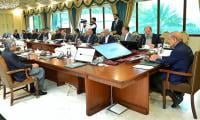The killing of Tehreek-e-Taliban Pakistan (TTP) chief Mullah Fazlullah, Pakistan’s most wanted terrorist, in a US drone strike in Afghanistan is a major blow to the terrorist group. Since his eviction from Swat in 2009, Fazlullah had been operating from Afghanistan’s border areas. His killing is the most significant battlefield elimination of a militant leader since the tragic Army Public School (APS) attack in 2014.
On June 23, the TTP shura announced Mufti Noor Wali Mehsud as Fazlullah’s successor. Unlike previous power transitions, which were bloody, fractious and long-drawn-out, Noor Wali’s appointment has been smooth and peaceful. The leadership of the TTP has returned to the Mehsud Taliban. Noor Wali is a religious scholar who has been with the Mehsud Taliban since 2003 and served as a judge and head of the TTP’s publication wing, Al-Umer Media. The immediate challenge of the new TTP chief would be to reunify the various TTP factions, plug possible defection to the Islamic State Khorasan Province (ISKP), establish his authority as the new head and carryout some high-profile terrorist attacks in Pakistan to prove his credentials.
Fazlullah’s killing will further undermine the already fractured TTP’s organisational coherence. It will also neutralise the limited organisational resurrection the TTP had achieved in Afghanistan since its complete ouster from Fata (formerly) in Pakistan. As a result, the group’s operational capabilities to mount large-scale attacks on mainland Pakistan will be impaired further.
Five factors have been critical in the ideological, operational and organisational degradation of the TTP: the US drone strikes, Pakistan army’s counter-terrorism operations in various parts of Fata, the TTP’s indiscriminate violence against civilians, failure of strategic communication and rise of the ISKP – Isis’ offshoot in Afghanistan.
First, the US drone strikes have decapitated the TTP’s top leadership present in Afghanistan-Pakistan border areas. The ensuing leadership vacuums, infighting and ethnic rivalries have progressively downgraded the TTP’s potential as a potent terrorist outfit. TTP founder Baitullah Mehsud was killed in a drone attack in South Waziristan in August 2009, while his successor Hakimullah Mehsud was eliminated in North Waziristan in November 2013. Other top TTP commanders killed in drone strikes include the TTP’s master suicide bombing trainer, Qari Hussain (October 2010), mastermind of the APS attack, Khalifa Umar Mansoor (October 2017), the deputy chief of the TTP, Waliur Rehman (May 2013), and Khan Said Sajna (February 2018).
Second, Pakistan Army’s counter-terrorism operations have downgraded the TTP operationally and organisationally. So far, the Pakistan Army has conducted six major – in addition to over a dozen small-scale – military operations which include operations Sherdil in Bajaur Agency, Rah-e-Rast in Swat, Rah-e-Nijat in South Waziristan, Khyber-I & II in Khyber Agency, Zarb-e-Azb in North Waziristan and Raddul Fasaad, currently ongoing across the country.
These operations helped Pakistan reclaim control of tribal territories from the TTP. In this operation, the TTP’s command and control system, sanctuaries, training centres for suicide bombers and IED-manufacturing laboratories were destroyed. The territorial defeat and infrastructural losses hampered the TTP’s ability to attract fresh recruits and mount high-profile attacks in mainland Pakistan. These setbacks also damaged the group’s financial resources. The TTP relied on extortion, bank robberies, kidnappings for ransom and the toll-tax collected from vehicles passing through check posts in areas under the TTP’s control.
Third, the TTP’s indiscriminate violence against civilians, particularly the assassination attempt on Malala Yousafzai in 2013 and the APS attack in 2014, deprived the TTP of public support – the lifeline of any terrorist group. The environment in Pakistan post-APS paved the way for a rare civil-military consensus in the form of the National Action Plan (NAP), to root out the remaining pockets of the TTP from across Pakistan.
After the APS attack, even those religio-political parties that advocated a reconciliatory approach towards the TTP had to withdraw their support. Recently, the Pakistani government issued a counter-narrative against terrorism, Paigham-e-Pakistan, in the form of a fatwa signed and endorsed by over 1,829 religious scholars. The fatwa declares suicide terrorism and violent acts in the name of Islam and jihad in Pakistan as unlawful.
Fourth, by definition, terrorism is propaganda by deed. And strategic communication lies at the heart of achieving the immediate and long-term goals of a terrorist organisation. In the battle of ideas and winning hearts and minds between the government and a terrorist group, the way the terrorist leadership communicates with its supporters and sympathisers is critical in determining its lifecycle. Despite a loud ideological rhetoric of transforming Pakistan into an Islamic state, the TTP failed to articulate its operational strategy and political vision ie, how will it transform Pakistan into a theocracy. Though the TTP has regularly published several magazines such as Al-Hitin, Ihyae Khilafat, Mujalla Taliban and Sunnate Khaula, there is no clarity as to what kind of Islam the TTP envisioned for Pakistan.
Fifth, ideologically, the rise of Isis in June 2014 triggered a series of individual and factional defection within the TTP. Isis’ narrative of the so-called caliphate, military victories in Iraq and Syria and better salary packages allured Jundullah, Orakzai and Bajaur factions of the TTP. The first emir of ISK, Hafiz Saeed Khan Orakzai, was the former head of the TTP’s Orakzai chapter. Currently, TTP factions form the lion’s share of ISK in Afghanistan. The demise of Fazlullah may trigger more defections from the TTP to ISK.
As of now, the TTP is past its prime and no longer poses an existential threat to Pakistan’s internal security. Two of its splinter factions, the Jamaat-ul-Ahrar (JuA) and ISK have eclipsed the TTP. With Fazlullah’s killing, the group is entering the phase of elimination, from where recovery seems least likely. However, the group could remain loosely intact through residual members and leaders. The weakening of the TTP is as much a result of the military operations and drone attacks against it as it is a consequence of the evolving conflict ecology in the Af-Pak border region. Nonetheless, the threat of terrorism in Pakistan is far from over. The elimination of a terrorist group does not constitute the elimination of the terrorist threat.
Fazlullah’s killing on Afghan soil and Islamabad’s assistance to Kabul and Washington to jump-start the stalled peace process, underscores that whether or not conflict resolution requires the use of kinetic or non-kinetic measures, it does require joint efforts under cooperative frameworks. Neither Pakistan, nor Afghanistan can overcome these issues in isolation or by working at cross purposes.
The writer is an associate researchfellow at the S Rajaratnam School of International Studies (RSIS), Singapore.
Email: isabasit@ntu.edu.sg
A woman walks past a building of the International Monetary Fund. — AFP/FileThe annual and spring meetings of the...
Late Benazir Bhutto's daughter Asifa Bhutto Zardari addresses the Christian community in Bihar Colony on January 23,...
Representational image. — PexelsWater is an important scarce natural resource that is required for several everyday...
Pakistani employees of online marketplace company Kaymu at work in Karachi. — AFP/FileThe true spirit of development...
India uses Afghanistan as a backstage area to carry out terrorist attacks against Pakistan
Another report by the Pakistan Institute of Peace Studies states that 78 per cent of attacks have been carried out by...







